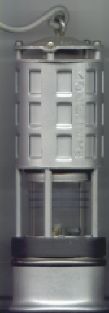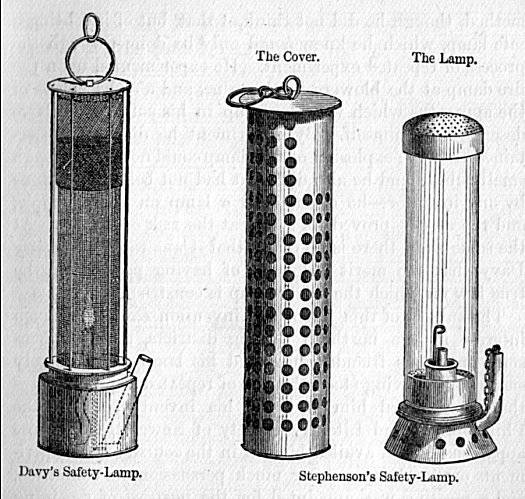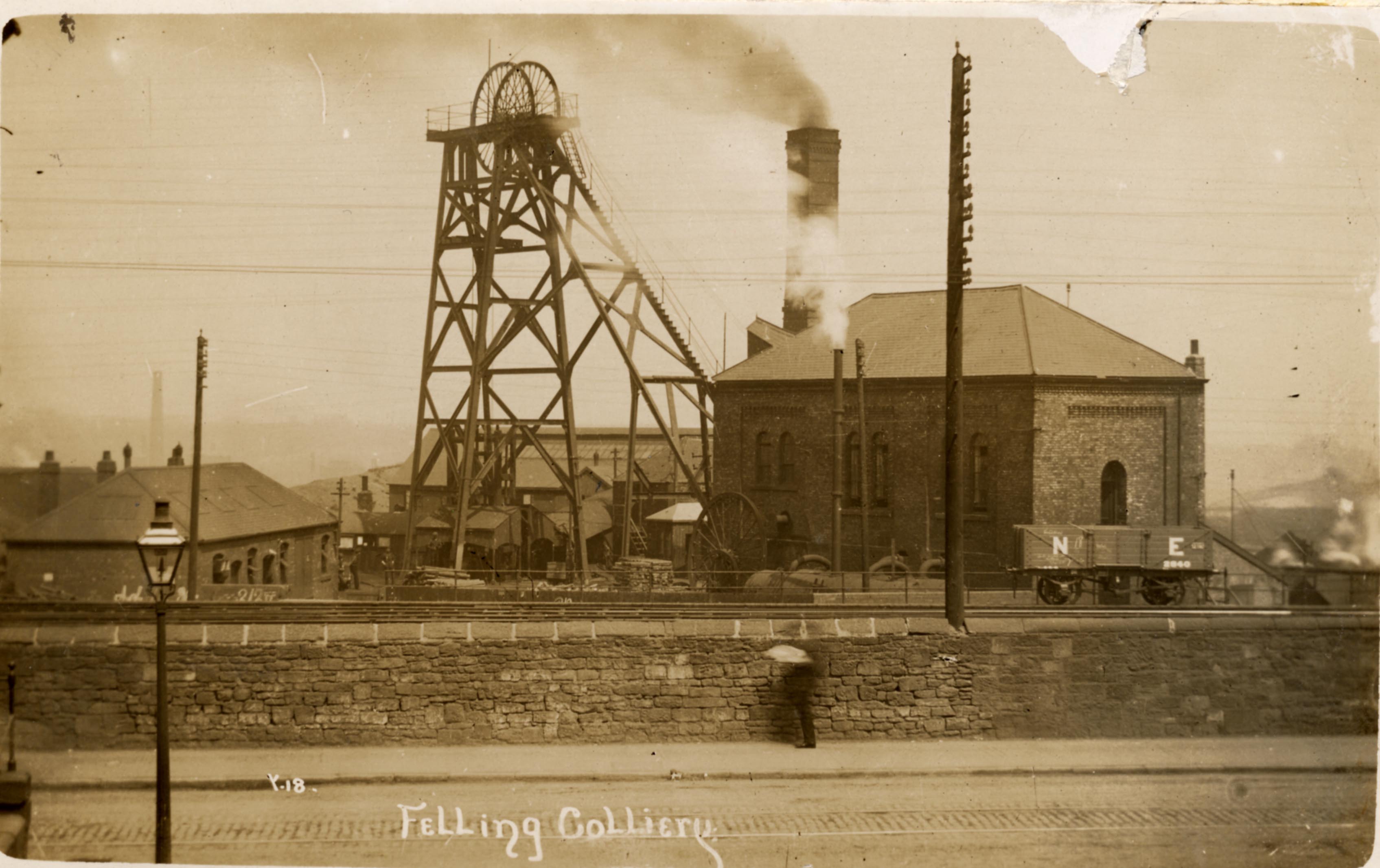|
Firedamp
Firedamp is any flammable gas found in coal mines, typically coalbed methane. It is particularly found in areas where the coal is bituminous. The gas accumulates in pockets in the coal and adjacent strata and when they are penetrated the release can trigger explosions. Historically, if such a pocket was highly pressurized, it was termed a "bag of foulness". Name Damp is the collective name given to all gases (other than air) found in coal mines in Great Britain and North America. As well as firedamp, other damps include ''blackdamp'' (nonbreathable mixture of carbon dioxide, water vapour and other gases); whitedamp (carbon monoxide and other gases produced by combustion); poisonous, explosive ''stinkdamp'' (hydrogen sulfide), with its characteristic rotten-egg odour; and the insidiously lethal ''afterdamp'' (carbon monoxide and other gases) which are produced following explosions of firedamp or coal dust. Etymology Often hyphenated as fire-damp, this term for a flammabl ... [...More Info...] [...Related Items...] OR: [Wikipedia] [Google] [Baidu] |
Safety Lamp
A safety lamp is any of several types of lamp that provides illumination in coal mines and is designed to operate in air that may contain coal dust or gases, both of which are potentially flammable or explosive. Until the development of effective electric lamps in the early 1900s, miners used flame lamps to provide illumination. Open flame lamps could ignite flammable gases which collected in mines, causing explosions; safety lamps were developed to enclose the flame and prevent it from igniting the surrounding atmosphere. Flame safety lamps have been replaced in mining with sealed explosion-proof electric lights. Background Damps or gases Miners have traditionally referred to the various gases encountered during mining as damps, from the Middle Low German word ''dampf'' (meaning "vapour"). Damps are variable mixtures and are historic terms. * ''Firedamp'' Naturally occurring flammable mixtures, principally methane. * ''Blackdamp'' or ''Chokedamp'' Nitrogen and carbon dioxide ... [...More Info...] [...Related Items...] OR: [Wikipedia] [Google] [Baidu] |
Davy Lamp
The Davy lamp is a safety lamp for use in flammable atmospheres, invented in 1815 by Sir Humphry Davy.Brief History of the Miner's Flame Safety Lamp at minerslamps.net. Accessed 7 July 20121 It consists of a lamp with the flame enclosed inside a mesh screen. It was created for use in s, to reduce the danger of explosions due to the presence of and other flammable gases, called '' |
Sir James Lowther, 4th Baronet
Sir James Lowther, 4th Baronet, FRS (1673 – 2 January 1755) was an English landowner, industrialist and Whig politician who sat in the House of Commons for 54 years between 1694 and 1755. His ownership and development of coal mines around Whitehaven in Cumberland gave him substantial revenues, and he was reputed the richest commoner in England. Early life Lowther was baptised on 5 August 1673 at St Giles in the Fields, London, the second son of Sir John Lowther, 2nd Baronet and Jane Leigh. Educated privately in London, he attended Queen's College, Oxford and the Middle Temple. On the death of his father in 1706, the baronetcy was inherited by James's elder brother Christopher, but Christopher (whose drinking and gambling had led his father to disinherit him) was cut off with an annuity of about £100 a year and the family properties passed to James, who subsequently inherited the baronetcy in 1731, when his brother died without children. Politics In 1694, Lowther was returne ... [...More Info...] [...Related Items...] OR: [Wikipedia] [Google] [Baidu] |
Geordie Lamp
The Geordie lamp was a safety lamp for use in flammable atmospheres, invented by George Stephenson in 1815 as a miner's lamp to prevent explosions due to firedamp in coal mines. Origin In 1815, Stephenson was the engine-wright at the Killingworth Colliery in Northumberland and had been experimenting for several years with candles close to firedamp emissions in the mine. In August he ordered an oil lamp which was delivered on 21 October and tested by him in the mine in the presence of explosive gases. He improved this over several weeks with the addition of capillary tubes at the base so that it gave more light and tried new versions on 4 and 30 November. This was presented to the Literary and Philosophical Society (Lit & Phil) of Newcastle upon Tyne on 5 December 1815. Although controversy arose between Stephenson's design and the Davy lamp (invented by Humphry Davy in the same year), Stephenson's original design worked on significantly different principles from Davy's final d ... [...More Info...] [...Related Items...] OR: [Wikipedia] [Google] [Baidu] |
Felling Mine Disaster
The Felling Colliery (also known as Brandling Main) in Britain, suffered four disasters in the 19th century, in 1812, 1813, 1821 and 1847. By far the worst of the four was the 1812 disaster which claimed 91 lives on 25 May 1812. The loss of life in the 1812 disaster was one of the motivators for the development of miners' safety lamps such as the Geordie lamp and the Davy lamp. Colliery description Felling is an area in the English County of Tyne and Wear. Mining of the upper seams had continued throughout the 18th century. Following borings starting in 1758, the main pit was opened in 1779. The first seam to be worked was the High Main which ceased production in 1811. Shortly before the High Main was exhausted, the pit was deepened to reach the Low Main which came into production in May 1811, just a year before the disaster. The Low Main lies below the surface and is thick. Subsequently two other seams, the Bensham (or Maudlin) and the Hutton were won. To ensure adequate ... [...More Info...] [...Related Items...] OR: [Wikipedia] [Google] [Baidu] |
Humphry Davy
Sir Humphry Davy, 1st Baronet, (17 December 177829 May 1829) was a British chemist and inventor who invented the Davy lamp and a very early form of arc lamp. He is also remembered for isolating, by using electricity, several elements for the first time: potassium and sodium in 1807 and calcium, strontium, barium, magnesium and boron the following year, as well as for discovering the elemental nature of chlorine and iodine. Davy also studied the forces involved in these separations, inventing the new field of electrochemistry. Davy is also credited to have been the first to discover clathrate hydrates in his lab. In 1799 he experimented with nitrous oxide and was astonished at how it made him laugh, so he nicknamed it "laughing gas" and wrote about its potential anaesthetic properties in relieving pain during surgery. Davy was a baronet, President of the Royal Society (PRS), Member of the Royal Irish Academy (MRIA), Fellow of the Geological Society (FGS), and a member ... [...More Info...] [...Related Items...] OR: [Wikipedia] [Google] [Baidu] |
Afterdamp
Afterdamp is the toxic mixture of gases left in a mine following an explosion caused by methane-rich firedamp, which itself can initiate a much larger explosion of coal dust. The term is etymologically and practically related to other terms for underground mine gases—such as firedamp, white damp, and black damp, with afterdamp being composed, rather, primarily by carbon dioxide, carbon monoxide and nitrogen, with highly toxic stinkdamp-constituent hydrogen sulfide possibly also present. However, the high content of carbon monoxide is the component that kills, preferentially combining with haemoglobin in the blood and thus depriving victims of oxygen. Globally, afterdamp has caused many of the casualties in disasters of pit coalfields, including British, such as the Senghenydd colliery disaster. Such disasters continue to afflict working mines, for instance in mainland China. Etymology The meaning of "damp" in this term, while most commonly understood to imply humidity, presents e ... [...More Info...] [...Related Items...] OR: [Wikipedia] [Google] [Baidu] |
Abercarn Colliery Disaster
The Abercarn colliery disaster was a catastrophic explosion within the Prince of Wales Colliery in the Welsh village of Abercarn (then in the county of Monmouthshire), on 11 September 1878, killing 268 men and boys (though an exact number of casualties remains unknown). The cause was assumed to have been the ignition of firedamp by a safety lamp. The disaster is the third worst for loss of life to occur within the South Wales Coalfield. Explosion Shortly after midday on 11 September 1878, with 325 men and boys working underground, a large explosion ripped through the Prince of Wales Colliery. The colliery’s steam whistle blew, signalling that an emergency was underway, drawing colliers and the families of those trapped to the pit head. The explosion caused significant damage to the mine’s roadways and to the bottom of the main shaft. Several fires ignited the coal seams and supporting timber structures, filling the mine with smoke. Rescue attempts A rescue team entered the ... [...More Info...] [...Related Items...] OR: [Wikipedia] [Google] [Baidu] |
Whitehaven
Whitehaven is a town and port on the English north west coast and near to the Lake District National Park in Cumbria, England. Historically in Cumberland, it lies by road south-west of Carlisle and to the north of Barrow-in-Furness. It is the administrative seat of the Borough of Copeland, and has a town council for the parish of Whitehaven. The population of the town was 23,986 at the 2011 census. The town's growth was largely due to the exploitation of the extensive coal measures by the Lowther family, driving a growing export of coal through the harbour from the 17th century onwards. It was also a major port for trading with the American colonies, and was, after London, the second busiest port of England by tonnage from 1750 to 1772. This prosperity led to the creation of a Georgian planned town in the 18th century which has left an architectural legacy of over 170 listed buildings. Whitehaven has been designated a "gem town" by the Council for British Archaeology due to ... [...More Info...] [...Related Items...] OR: [Wikipedia] [Google] [Baidu] |
Coal Dust
Coal dust is a fine powdered form of which is created by the crushing, grinding, or pulverizing of coal. Because of the brittle nature of coal, coal dust can be created during mining, transportation, or by mechanically handling coal. It is a form of fugitive dust. Grinding coal to dust before combusting it improves the speed and efficiency of burning and makes the coal easier to handle. However, coal dust is hazardous to workers if it is suspended in air outside the controlled environment of grinding and combustion equipment. It poses the acute hazard of forming an explosive mixture in air and the chronic hazard of causing pulmonary illness in people who inhale excessive quantities of it. The distribution of the particle-size of coal dust is frequently measured in mesh. The British slang term for cheap fuel consisting of coal dust (slack) containing small lumps of coal (nuts) is nutty slack. Risks The Occupational Safety and Health Administration (OSHA) has set the legal limit (P ... [...More Info...] [...Related Items...] OR: [Wikipedia] [Google] [Baidu] |
Tyneside
Tyneside is a built-up area across the banks of the River Tyne in northern England. Residents of the area are commonly referred to as Geordies. The whole area is surrounded by the North East Green Belt. The population of Tyneside as published in the 2011 census was 774,891, making it the eighth most-populous urban area in the United Kingdom. In 2013, the estimated population was 832,469. Politically, the area is mainly covered by the metropolitan boroughs of Newcastle-upon-Tyne, Gateshead, North Tyneside and South Tyneside. The boroughs on the Tyne are joint with Wearside which is in both the counties of Durham (Chester-le-Street) and Tyne and Wear. Settlements The ONS 2011 census had 774,891 census respondents inside the "Tyneside Built-up Area" or "Tyneside Urban Area". These figures are a decline from 879,996; this loss was mainly due to the ONS reclassifying Hetton-le-Hole, Houghton-le-Spring, Chester-le-Street and Washington in the Wearside Built-up Area instead of Tyn ... [...More Info...] [...Related Items...] OR: [Wikipedia] [Google] [Baidu] |
George Stephenson
George Stephenson (9 June 1781 – 12 August 1848) was a British civil engineer and mechanical engineer. Renowned as the "Father of Railways", Stephenson was considered by the Victorians a great example of diligent application and thirst for improvement. Self-help advocate Samuel Smiles particularly praised his achievements. His chosen rail gauge, sometimes called "Stephenson gauge", was the basis for the standard gauge used by most of the world's railways. Pioneered by Stephenson, rail transport was one of the most important technological inventions of the 19th century and a key component of the Industrial Revolution. Built by George and his son Robert's company Robert Stephenson and Company, the ''Locomotion'' No. 1 was the first steam locomotive to carry passengers on a public rail line, the Stockton and Darlington Railway in 1825. George also built the first public inter-city railway line in the world to use locomotives, the Liverpool and Manchester Railway, which opene ... [...More Info...] [...Related Items...] OR: [Wikipedia] [Google] [Baidu] |









